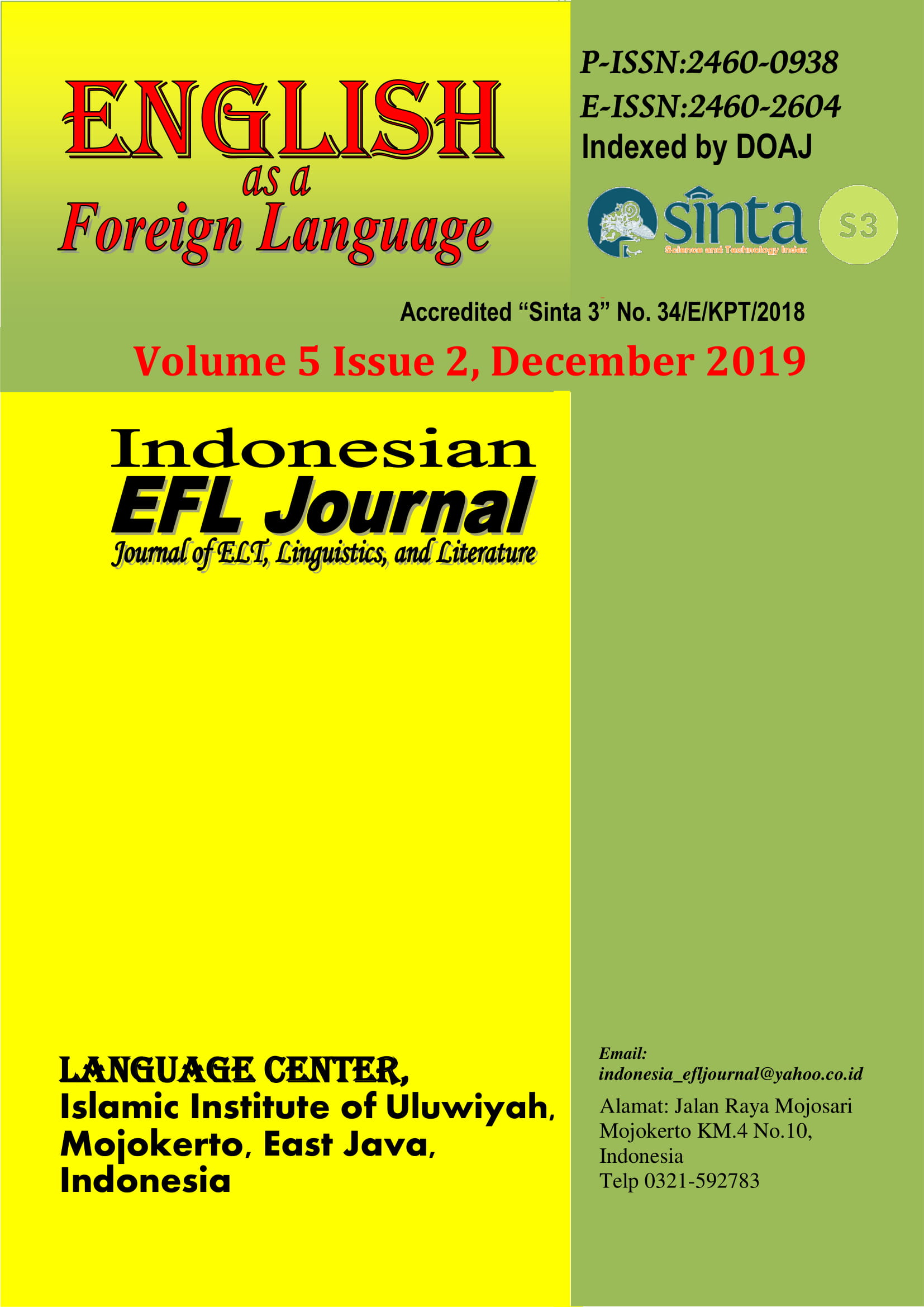The Application of Textual Metafunction in Developing EFL Learners’ Writing Materials
Abstract
In the 21st century, millennial generation tends to swipe and skip thingson their gadgets easily resulting in shortspan of focus in learning English as a foreign language. They are not able to relate issues happening around them appropriately. This phenomenon is crucial as their dependence toward technology provoke them to only digest single-separated or chunky materials. Regarding it, then, it isvery challenging for EFL learners to demonstrate good writing skill as one productive skill in English. The role of English teachers in providing appropriate materials to improve the students’ writing materials as well as skills in producing a good writing, particularly on the level of semantics and discourse (context), becomes major.This library research, by using theoretical analysis, aims at exploring previous theories and findings on SFG, textual metafunction, theme, rheme, cohesion, and coherence in relation to improving EFL writing materials andskills. Furthermore, this research argued that the application of textual metafunction is coherent with enhancing concepts in students’ writing, providing a systematic learning in a piece of writing, encouraging students’ critical thinking skill, and finally promoting a meaningful learning in a writing class. Hence, this literature-based study provides insights for English teachers in teaching writing to facilitate textual metafunction theory and its componentsto develop EFL learners’ writing materials and further skills.
References
Cahyono, S. P. (2012). Applying textual metafunction in EFL writing: An approach to teach writing.LITE JurnalBahasa, Sastra, danBudaya, 8(1): 35-54.
Chen, M. (2008).Applying thinking skills to EFL classrooms.Presented at the British Educational Research Association Annual Conference, Heriot-Watt University, Edinburgh, 3-6 September 2008.
Halliday, M. A. K andMatthiessen, C. M. I. (2004). An Introduction to Functional Grammar (4thed). London: Hodder Education.
Hodgson, D. (2010). Finding the sweet spot: Creating learning-centered workshops.Revolutionize Your Learning! Transform Your World, 17: 10-15.
Navratilova, O. (2017). Coherence and Cohesion in English Discourse. Brno: Masaryk University Press.
Paiva, K. S. M and Lima, E. F. (2011). Systemic functional linguistics as a desirable approach to L2 Writing Evaluation: A case study.
Paziraie, M. E. (2013). The effect of textual metafunction on the Iranian EFL learners’ writing perfomance.English Language Teaching, Canadian Center of Science and Education, 6(2): 71-83. DOI: 10.5539/elt.v6n2p71.
Sipayung, K. T. et.al.(2016). Metafunction realization on students’ descriptive paragraphs.International Journal of Linguistics, 8(6): 20-30.
Thompson, G. (2004). Introducing Functional Grammar (3rded). London and New York: Routledge.
Gerot, L. and Wignell, P. (1994).Making Sense of Functional Grammar. Australia: GerdStabler.
Copyright (c) 2020 Indonesian EFL Journal: Journal of ELT, Linguistics, and Literature

This work is licensed under a Creative Commons Attribution-ShareAlike 4.0 International License.
All rights reserved.
this publication may be reproduced, stored in a retrieval system, or transmitted
in any form or by any means, electronic, mechanical, photocopying, recording.




